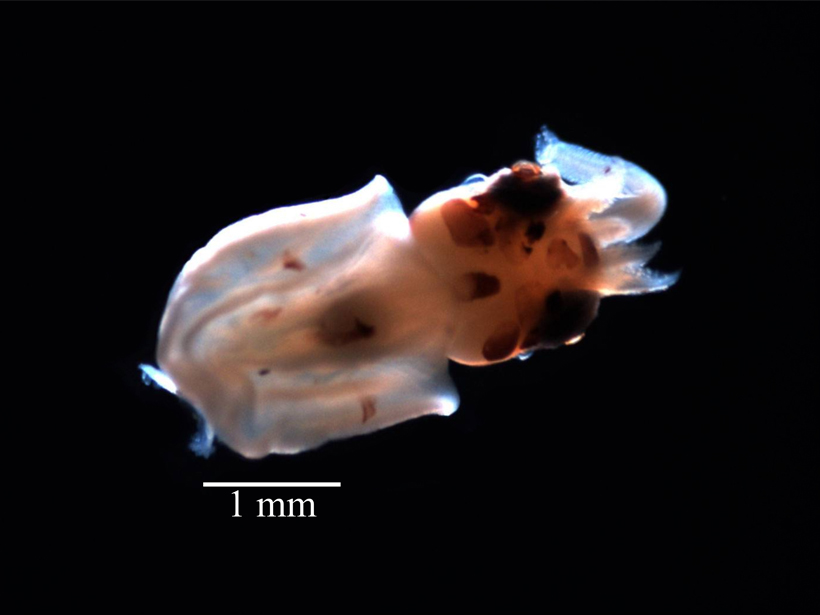Source: Journal of Geophysical Research: Oceans
The jumbo squid, Dosidicus gigas, is a significant food source that is concentrated in the eastern tropical Pacific Ocean off the coasts of California, Mexico, Peru, and Chile. Despite the economic importance of this fishery, however, significant fluctuations in its population and distribution remain poorly understood. Northward expansions of jumbo squid populations, for example, have been related both to El Niño events and to the expansion of the world’s largest area of shallow, oxygen-depleted water. Centered west of Costa Rica in the northeastern tropical Pacific Ocean, this oxygen minimum zone—which can stress, and even kill, organisms living in the water column—extends as far northward as the entrance to the Gulf of California.
To better understand the potential impacts of this low-oxygen zone on the life cycle of jumbo squid, Sánchez-Velasco et al. determined the three-dimensional distribution of the squid paralarvae, the juveniles in the vulnerable stages between hatching and adulthood, in relation to the concentration of dissolved oxygen off the coast of central Mexico in April–May 2012.
Their results show that the top of the oxygen-depleted layer was located within 20 to 50 meters of the surface in the southern part of the study area, near Cabo Corrientes, and that the jumbo squid juveniles present there were concentrated in the warm, oxygen-rich water above this depleted layer. Most of the juveniles detected during the study, however, were located farther north, near the entrance to the Gulf of California, where the top of the oxygen minimum zone was up to 5 times deeper.
At the gulf entrance, the team measured the greatest abundance of juveniles in a clockwise eddy whose composition was consistent with that of the California Current. According to the researchers, the fact that only two juveniles were documented in the saltier waters north of this eddy indicates the importance of local oceanographic influences—including eddies and upwellings—on the distribution of the paralarvae.
The authors conclude that the vertical expansion of the oxygen minimum zone in the eastern tropical Pacific may be restricting the jumbo squid paralarvae to an increasingly thinner surface layer. The increase in environmental stress associated with this vertically shrinking habitat could, in turn, lead to the species’ northward expansion. The authors note, however, that repeat observations will be necessary to document the long-term effects of the growth of the oxygen minimum zone on the pelagic ecosystem. (Journal of Geophysical Research: Oceans, doi:10.1002/2015JC011534, 2016) —Terri Cook, Freelance Writer
Citation: Cook, T. (2016), Understanding the distribution of juvenile jumbo squid, Eos, 97, doi:10.1029/2016EO051909. Published on 9 May 2016.
Text © 2016. The authors. CC BY-NC-ND 3.0
Except where otherwise noted, images are subject to copyright. Any reuse without express permission from the copyright owner is prohibited.

